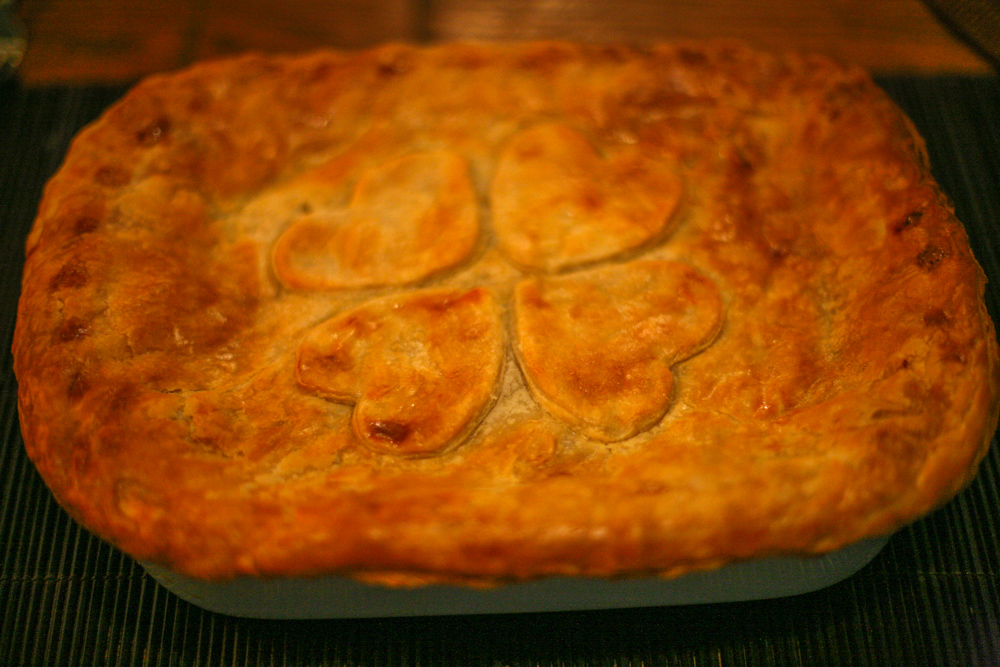January is a month for nesting. The weather tends to be so cold and blustery, with the odd rain or snow shower, that I like to hibernate, wear thick wooly jumpers and keep warm. It’s the perfect time to cook hearty food, bake and make those chutneys, marmalades and pickles (I made a batch of my carrot and daikon pickle) that you’ve been meaning to do. I did venture out earlier this week however to try my first hot pot at a restaurant that opened last year by the same name. They have over 150 restaurants in Asia but this is their first foray on British shores. It’s at the gate of China town, near Soho, so is very easy to find. Hot pots are in many respects the Chinese version of fondu, although with fondu of course there is no broth to eat with your meat or cheese. They are a great social way to dine with family and friends as a great big pot of steaming broth is the centrepiece of the whole table. I guess they would also be a great date idea, as it’s a fun way to eat and there would always be something to talk about! From a health perspective, broths are a perfect way to strengthen your immune system, which often tends to be quite low at this time of year.
We were welcomed by friendly staff who were on hand to talk us through the menu. Now the menu can be a little daunting at first glance folks, but do not be phased by this hurdle. First you need to decide on which broth you want to go for. You can chose one or two, the latter coming in one giant bowl with a clever partition in the middle (see photo below). We obviously went for the two option. There are 8 choices and they all sounded delicious.
They ranged from the non-spicy to the kickass spicy. We decided to opt for two non-spicy ones – the vegan “longevity mushroom broth” – made up of a host of mushrooms and cordyceps flowers. It has a high content of antioxidants, minerals and vitamin D. Our other choice was the “herbal drunken chicken”. With a name like that how could we resist? It’s made from British free-range chicken that has been cooked in a broth for 4.5 hours with a range of herbs and tonics.
Next you need to choose what to put into the broth. There are a number of platter options, as well as individual plate options, which come in half plate or full plate sizes. We chose everything in half plate, which was more than enough for two people. We went for the sea bass fillets, the spicy marinaded pork, some king prawns, winter melon, Chinese cabbage, emerald spinach noodles and some fried tofu puffs. Whilst our order was being prepared we went over the self serving sauce station (now say that quickly 4 times ;o) where you can get as creative as you wish. The floors over in this section of the restaurant where rather instragramable don’t you think?
There were so many choices that we took a couple of little plates back to the table: soy sauce, chilli sauce, peanut sauce, garlic, spring onions, chillies, sesame seeds to name a few.
This was my favourite that I ‘created’ (see photo above). The waiting staff will turn on your hob on the table and then let the stock bubble away gently for a few minutes. You then start by adding your vegetables and some of your noodles and leaving them for a very short while before fishing them out and placing them in a small bowl to then dunk in your sauce and eat. Delicious. If you order the winter melon, don’t leave them in there for too long or they will begin to disintegrate, a mistake we made. You can take a little broth as you go to slurp away, it really does warm you to your inner core. The longer the broth cooked, the more the flavours intensified. We then added the sea bass and prawns for a couple of minutes max before dunking in the pork (which in fact didn’t taste spicy) for around 4-5 minutes cooking.
Both broths tasted really good and distinct from one another. I would happily choose both again. If I had to choose one over the other I think the herbal drunken chicken had the edge, but it really was a hard call. We ordered the right amount and couldn’t quite finish all of the broth. My dining companion lived in Hong Kong for many years and is in fact half Chinese and she was pleasantly surprised by how delicious both broths were. A real accolade if ever there was one. The restaurant is over two floors (and sits up to 150 apparently), although only the downstairs tends to be open in the day time, largely owing the the footfall. The clientele ranged from families, couples, friends and Chinese business man, so I think it would appeal to anyone of any age. There is also a number of Thai food options as well as the hotpots, if someone in your party would rather eat Thai. I think my children would love it and perhaps it would make an ideal lunch spot after a morning at the British Museum.
Hot Pot Restaurant, 17 Wardour Street, London W1D 6PJ
Tel: 020 7287 8881 (open facility from noon-12.30am)
http://www.hotpotrestaurants.co.uk / @hotpotlondon_
Thank you to Hot Pot Restaurant for my complimentary lunch. All opinions are my own and I would happily return again.
Back at home I have been working on my Chinese braised oxtails, which I cooked over Christmas for the whole family and wanted to improve upon. Now don’t get put off by the word “oxtails” folks. Ok, perhaps if you are vegan or vegetarian you can stop reading from now on, but for everyone else, they taste really good but there are a few tricks you need to know about when cooking them. The secret is to cook/braise them for a long time in a low oven – 5h30 mins at 150 degrees centigrade. You need to have it so that the meat is literally falling off the bone.
I served it with some brown rice, cavolo nero/pea/garlic medley and some roasted butternut squash, which I had coated with some freshly ground Sichuan peppercorns. It’s a complete crowd pleaser with all the family really enjoying it. I am sure it would work equally well in a slow cooker, but I don’t have one so cooked it in the oven in my trusted Le Creuset pot.
It literally cooks itself so you can get on with other things whilst it slowly cooks away. Easy cooking, albeit one that takes time.
Chinese Braised Oxtails
Serves 6
2 tbsp of oil
2.6 kilos oxtails, cleaned and dried
45g ginger, chopped into thin batons
12 garlic cloves, roughly chopped
10 cloves
5 star anise
4 bay leaves
240ml Shaohsing rice wine (you can pick this up in large supermarkets and small Asian grocers)
6 tbsp light soy sauce
4 tbsp dark soy sauce
2 tbsp jaggery or brown sugar
700ml water
- Preheat the oven to 150 degrees centigrade.
- On your hob, add oil to a large ovenproof pot and then add some of the oxtails and brown all sides before removing and placing on a plate whilst you do the next batch.
- In the same pan, keeping the heat low, add the ginger, garlic, cloves, bay leaves and star anise and move around the pan for about a minute before adding the soy sauce, Shaohsing, sugar and water. I do not add any salt as I feel that enough comes from the soy sauces.
- Add the oxtails to the pan and coat in the sauce. Add a little more water if necessary and transfer to the oven.
- Cook for 5hours 30 minutes, by which time the meat will be falling off the bone. Over the course of the five hours move the oxtails around a few times. If it is looking dry simply add a little more water.
- Once it has cooked. Allow to cool before removing the oxtails – keep all the juice – and then using your hands allow the meat to fall off the bones. When all the meat has been removed return it to the pan and then rewarm before cooking and serve with brown rice, roasted butternut squash with some ground Sichuan peppercorns and some greens. Warming food for this cold weather.



















































